The BRAWL² Tournament Challenge has been announced!
It starts May 12, and ends Oct 17. Let's see what you got!
https://polycount.com/discussion/237047/the-brawl²-tournament
It starts May 12, and ends Oct 17. Let's see what you got!
https://polycount.com/discussion/237047/the-brawl²-tournament
model sheets = pencils, models = inks
Me and a co-artist at work were having a discussion about how much refinement you need to put into your model sheets. The title is an analogy I brought up to say what I think on the matter....since we both come from comic book backgrounds.
He's a dedicated 2D guy, so his model sheets are neatly rendered, down to the fibers holding the armor together..
I'm a model and concept art guy, and all I ever bother with in model sheets is volumes, and maybe flow. I even like to leave in my construction lines since they indicate alot about what goes on beneath the surface of the mesh. For the finer details, I doodle them out and figure out how they're put together, and just eyeball it on the model.
Since we work in a small shop I guess it doesn't matter which way you go, but if you work in a pipeline would you have to polish your model sheets to a finished level and leave no ambiguity in it? Or do you leave the modelers some room to put in their touch?
Some of his:
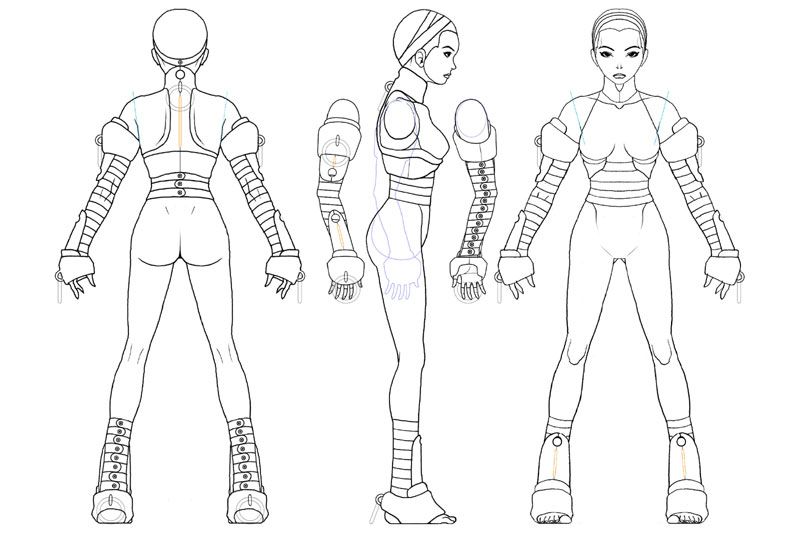
Some of mine:
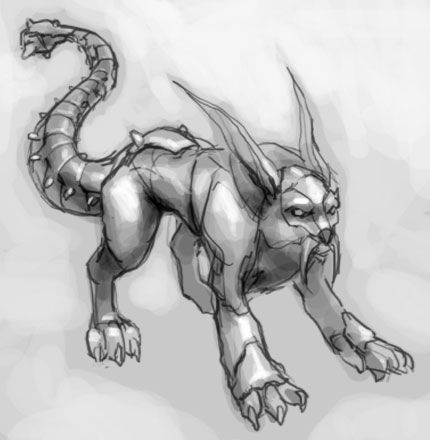
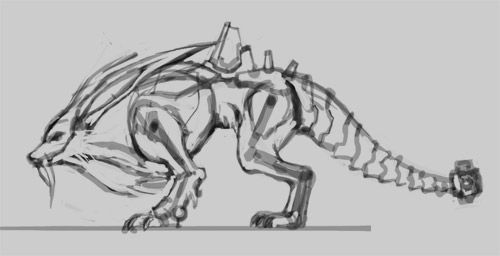
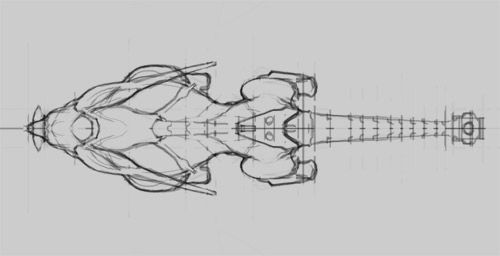
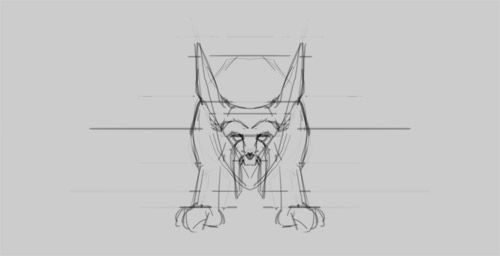
He's a dedicated 2D guy, so his model sheets are neatly rendered, down to the fibers holding the armor together..
I'm a model and concept art guy, and all I ever bother with in model sheets is volumes, and maybe flow. I even like to leave in my construction lines since they indicate alot about what goes on beneath the surface of the mesh. For the finer details, I doodle them out and figure out how they're put together, and just eyeball it on the model.
Since we work in a small shop I guess it doesn't matter which way you go, but if you work in a pipeline would you have to polish your model sheets to a finished level and leave no ambiguity in it? Or do you leave the modelers some room to put in their touch?
Some of his:

Some of mine:




Replies
I personally have very rarely worked in an environment that even has neatly drawn out model sheets like that. I've just not experienced it much. Generally our guys get handed a fairly loose colour concept. A posed 3/4 view that our AD and EP has signed off on. Generally that's what they ( and I ) have to model from. It can be a pain sometimes. Since often with a painterly colour Photoshop sketch, things are open to interpretation ( this can be a good and a bad thing for obvious reasons ) and there's often no back view! I think it also has to do with whatever concept Artist you're working with and what he's used to. Iain McCaig on the last game I worked on used to do 4 or 5 really loose posed roughs, the design would get honed until which point he would do awesome model sheets. But that was rare. Often there doesn't seem to be time for this level of detail in the studio I'm at. Personally, I like the creative freedom of a loose sketch to model from. It gives me more to think about whilst modeling other than blindly copying, gives me more creative input and enables me to not necessarily stick rigidly to proportions If I don't like them or find that they don't work in 3D. The obvious downside of course is that you could build something that people didn't quite have in mind. So, personally speaking, given all of those images I would prefer to work from your 3/4 beastie.
Generally our guys get handed a fairly loose colour concept. A posed 3/4 view that our AD and EP has signed off on. Generally that's what they ( and I ) have to model from.
[/ QUOTE ]
Yeah, I've never understood that, since basically you're using a linear medium, polygonal modeling, and you're trying to model from something that is based on depth and light, but may not specify form....but polygonal modeling is just forms.
To me those drawings are like blue prints to a home that helps a contractor build the structure. I can see the contours and contruction lines......a quickly rendered Photoshop sketch can obscure alot of the construction lines, due to obscuring of light and shadow and color.
noserider you said it pretty well, there is a gap between the 2D model sheets and the actual model that the 3D artist needs to fill. the model sheets for unreal 2 were pretty elaborate, with full shading, sometimes to a point where you couldn't make out the forms anymore. the artist said it takes 2-3 days to do a model sheet on that level. i took a look at them and wondered was it all really necessary? gimme half a day, and you've got model sheets like mine...crude but plenty adequate IMO.
I actually like the loose concepts as it gives you more freedom as modeler/skinner. A decent concept artist will either make quick separate concepts of important gadgets that are not clearly represented in the main concept, come over to your office and discuss it with you, or leave it up to you to come up with something cool (if you want).
Outline, weight distribution and body type (this goes for human and non human models) are the main infos i want to read out of a concept.
The sheets of the doggy thing are more than enough, i could see myself using them to get the basic proportions down quick and then using the main concept to get the proper dynamic (that you usually dont get out of orthos)... or even using photographs of dogs etc for musculature and more detailed anatomy ...depending how much detail it needs and how good you can model a dog without seeing one
While the girl orthos are clean, i think i could easily model a girl with the same bodybuild that looks more dynamic, appealing ands with a better anatomy, without the orthos missleading me. And you dont really need orthos to model in some armor and stuff after you have a body.
[ QUOTE ]
the model sheets for unreal 2 were pretty elaborate, with full shading, sometimes to a point where you couldn't make out the forms anymore. the artist said it takes 2-3 days to do a model sheet on that level. i took a look at them and wondered was it all really necessary?
[/ QUOTE ]
Hey hey, I was the modeler! The full shading wasn't necessary but it didn't hurt (and it was very pretty